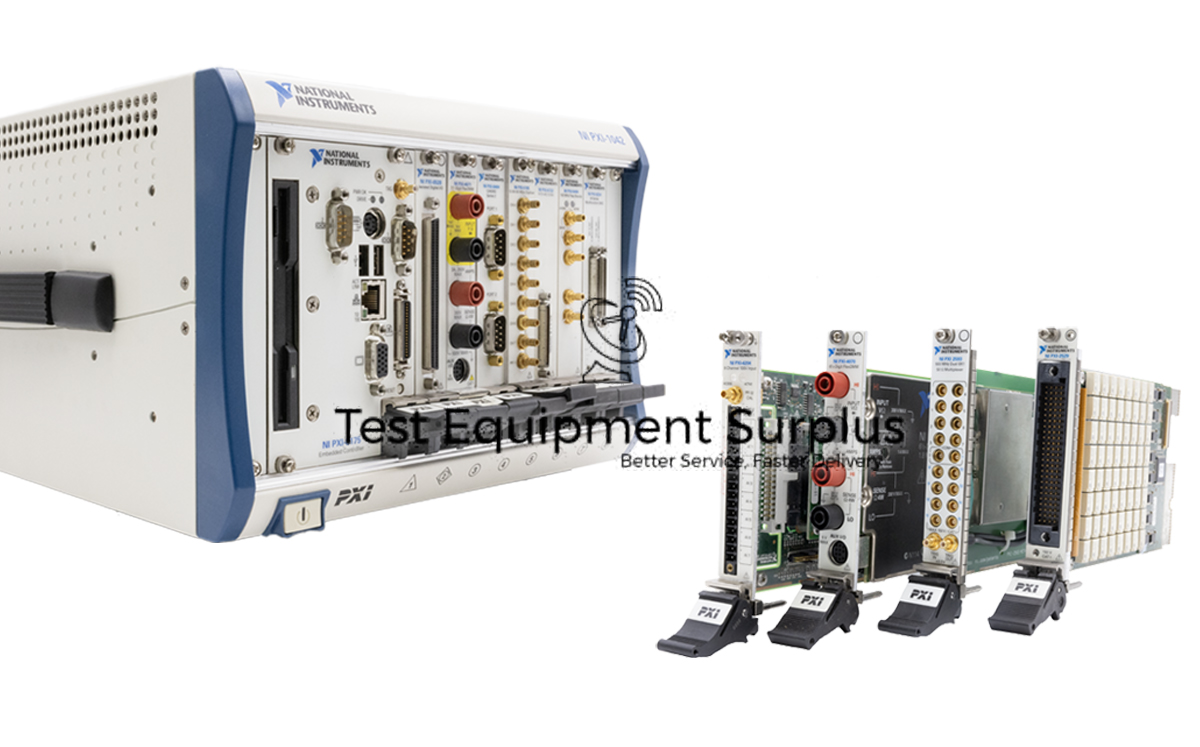Description
The National Instruments PXI-6683 PXI Synchronization Module, with part numbers 782109-01 and 782110-01, is a specialized Timing and Synchronization Module designed to enhance synchronization across PXI systems. It utilizes advanced synchronization methods including GPS, IEEE 1588, and IRIG B to ensure precise timing and coordination. At the heart of the module is a temperature-compensated crystal oscillator (TCXO), which provides long-term stability when disciplined to these synchronization sources.
Networking capabilities are robust, featuring an Ethernet RJ-45 port that supports 10/100/1000 Mbps speeds through auto-negotiation and Auto-MDI, which eliminates the need for crossover cables. The module also boasts full duplex capability, allowing for simultaneous data transmission and reception. Additionally, the PXI-6683 accommodates up to 13 PXI star triggers per chassis, with a propagation delay matched within 1 nanosecond according to the PXI Specification, Revision 2.1. The typical trigger skew is kept to an upper limit of 500 picoseconds in most NI PXI chassis, ensuring minimal timing variance. Furthermore, the module can adeptly route low skew triggers to the PXI_Star lines from any PFI line, solidifying its role as a comprehensive solution for system synchronization and timing.
| Feature | Description |
|---|---|
| Product Name | National Instruments PXI-6683 PXI Synchronization Module |
| Part Numbers | 782109-01, 782110-01 |
| Type | Timing and Synchronization Module |
| Synchronization Methods | GPS, IEEE 1588, IRIG B |
| Oscillator | Temperature-compensated crystal oscillator (TCXO) |
| Networking | Ethernet RJ-45 port, 10/100/1000 Mbps (auto-negotiation), Auto-MDI |
| Full Duplex Capability | Yes |
| Star Triggers | Up to 13 PXI star triggers per chassis |
| Propagation Delay Matching | Within 1 ns as per PXI Specification, Revision 2.1 |
| Trigger Skew | Typical upper limit is 500 ps in most NI PXI chassis |
| Trigger Routing | Can route low skew triggers to the PXI_Star lines from any PFI line |
Question 1: What advanced synchronization methods are utilized by the National Instruments PXI-6683 PXI Synchronization Module to ensure precise timing across PXI systems, and how does the module’s networking capabilities contribute to its performance?
Answer 1: The National Instruments PXI-6683 PXI Synchronization Module employs GPS, IEEE 1588, and IRIG B as advanced synchronization methods to achieve precise timing across PXI systems.
Question 2: What advanced synchronization methods does the National Instruments PXI-6683 PXI Synchronization Module employ to provide precise timing across PXI systems, and what features enhance its networking and trigger capabilities?
Answer 2: The National Instruments PXI-6683 PXI Synchronization Module utilizes advanced synchronization methods such as GPS, IEEE 1588, and IRIG B to ensure precise timing across PXI systems, and its networking capabilities are enhanced by an Ethernet RJ-45 port supporting 10/100/1000 Mbps speeds with full duplex capability, which allows for simultaneous data transmission and reception, thereby contributing to its high-performance synchronization and timing functions.
Question 3: What are the key features and capabilities of the National Instruments PXI-6683 PXI Synchronization Module that facilitate precise system timing and synchronization?
Answer 3: The National Instruments PXI-6683 PXI Synchronization Module employs advanced synchronization methods such as GPS, IEEE 1588, and IRIG B to ensure precise timing and coordination across PXI systems.
Question 4: What advanced synchronization methods does the National Instruments PXI-6683 PXI Synchronization Module employ to achieve precise timing across PXI systems?
Answer 4: The National Instruments PXI-6683 PXI Synchronization Module employs advanced synchronization methods such as GPS, IEEE 1588, and IRIG B to provide precise timing across PXI systems; additionally, its networking capabilities are enhanced by an Ethernet RJ-45 port with support for various speeds and full duplex capability, while its trigger capabilities are bolstered by the ability to accommodate up to 13 PXI star triggers per chassis, matched propagation delay, and the capacity to route low skew triggers to PX
Question 5: What advanced synchronization methods does the National Instruments PXI-6683 PXI Synchronization Module employ to ensure precise timing and coordination across PXI systems?
Answer 5: The National Instruments PXI-6683 PXI Synchronization Module features advanced synchronization methods such as GPS, IEEE 1588, and IRIG B, a temperature-compensated crystal oscillator for stability, an Ethernet RJ-45 port supporting up to 1 Gbps speeds, full duplex capability, the ability to handle up to 13 PXI star triggers with a matched propagation delay within 1 nanosecond, and low trigger skew of up to 500 picoseconds, making it a comprehensive




